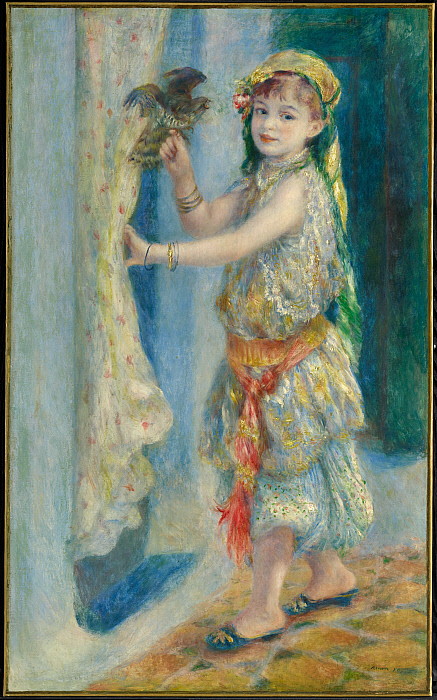Renoir and Algeria
February 16–May 11, 2003

Pierre-Auguste Renoir
Madamoiselle Fleury in Algerian Costume
1882 (Sterling and Francine Clark Art Institute)
Pierre-Auguste Renoir (1841–1919) was a prominent member of the group of artists known as the Impressionists, who challenged traditional ways of making and exhibiting art. While Renoir is celebrated for his images of Parisian life, portraits of pretty young women, and sun-filled landscapes, his paintings of Algerian subjects are less familiar. Renoir made two trips to the French colony of Algeria, in 1881 and 1882, where he painted the teeming life of the streets, landscapes filled with tropical vegetation, and opulent portraits of European settlers. Inspired by the Clark’s masterpiece Mademoiselle Fleury in Algerian Costume, this exhibition reveals an unexpected side of Renoir’s Impressionism.
Europeans had long been fascinated by the “Orient,” the countries of North Africa and the Middle East that were colonized in the early nineteenth century. Many artists crossed the Mediterranean in search of “exotic” subjects, developing a type of art known as Orientalism that quickly became popular with critics and the public. Renoir’s Algerian paintings bear a complex relationship to this established tradition. While many Orientalist artists made images that were essentially fantasies about the region and culture, Renoir tried to look at Algeria more objectively. In many ways his Algerian paintings are more intriguing than his better-known work, as they reflect his efforts to represent landscapes and cultures very different from those he usually portrayed.
The exhibition is organized by the Sterling and Francine Clark Art Institute and is supported by an indemnity from the Federal Council on the Arts and Humanities. The exhibition will later travel to the Dallas Museum of Art and the Institut du Monde Arabe, Paris. The exhibition catalogue is made possible in part through the generous support of Patti Cadby Birch.